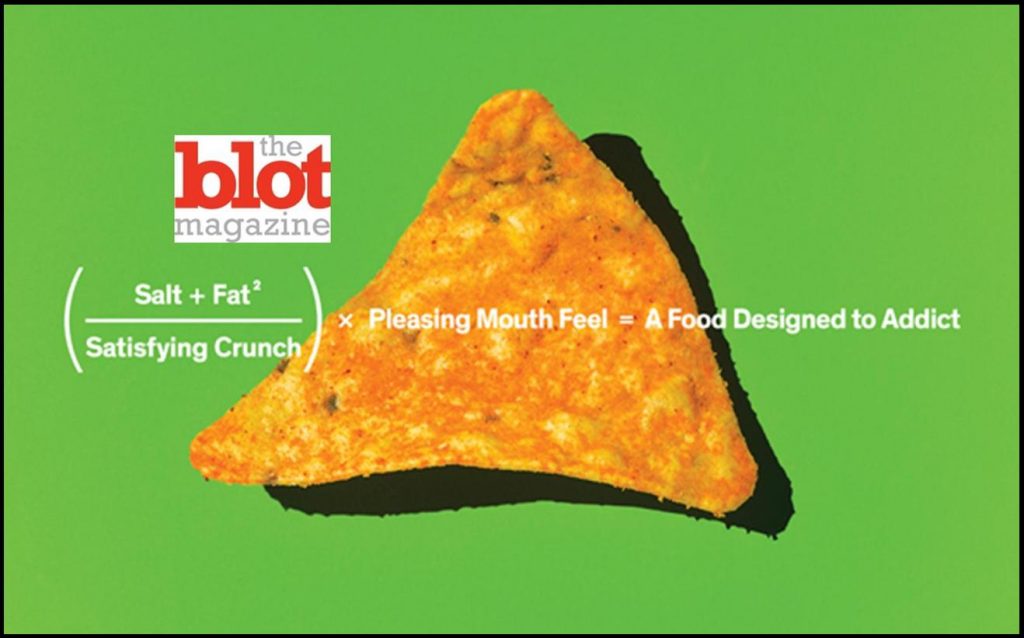This next must-know food science term, after mouthfeel, for all those wanting to understand why a bag of salty potato chips can hold our healthy-eating plans under siege, will help explain how it’s not your willpower failing you. Rather, it’s a complex process pinpointing the exact combination of ingredients that flash your neurological pleasure zones so wildly that you never get the satisfaction signal, the one that nudges you to stop eating.
This Week’s Need-to-Know Glossary Term: Bliss Point
What Is Bliss Point?
“Bliss Point is where we find just the right balance of the three main components our bodies crave,” says Karin Allen, PhD, a professor of food science at Utah State. In other words, it’s a precise ratio, or formulation, or concentration of certain nutrients the body is programmed to seek out and like (meaning fat, salt and sugar, which were key to survival in prehistoric times) combined in such a way as to make a food highly palatable. Each of our 10,000 odd taste buds has receptors triggered by fat, salt and sugar that link to the brain’s pleasure zone and send us signals, such as “That’s good! I need it! Eat more of it!” Fat, salt and sugar work synergistically so that in combination they are even more enjoyable and, some say, addictive than any one of the nutrients alone.
Origins of Bliss Point
Evolution plays a large role in why we find some foods so much more desirable than others. Back in the hunter-gatherer days, food was scarce. Vital nutrients required hard work to find. “So once these nutrients that ensured our survival — fat, salt and sugar — were found, the brain’s reward center rewarded us with a morphine-like endorphins boost,” says Dr. Allen. While our bodies can use fat or protein as an energy source if they need to, says Dr. Allen, it’s sugar and carbs that are the preferred source. “There’s a very strong positive response to sugar.”
Related:
Natural selection favored strong combinations of these nutrients where we could actually detect and taste them, according to a University of Indiana website. And the brain, driven by the neurotransmitter dopamine, would remember the foods that produced the positive sensations, causing cravings and the impulse to go back and eat more. “While we still need these nutrients, today we get way too much salt and sugar. Food is readily available. We grow up being told to clear our plates. We pay a lot for restaurant entrées and want to finish them. The food-manufacturing technology has outpaced biology. The brain is never going to signal that we’ve had too much sugar and to stop eating it.”
And that’s exactly what gets many of us into trouble. For those sensitive to endorphins’ and dopamine’s lure and enticement, overeating can become easy and unavoidable. It’s such reward seeking that is linked to addiction (though, in the medical community, it’s hotly debated whether one can really be addicted to food; many say evidence is lacking while others, such as researchers at Yale-Rudd, already have a food addiction scale).
Is Bliss Point Only in Processed Foods?
Certain nature-made foods (the ones containing some combination of these three nutrients) appeal to us now, just as they did the hunter-gatherers, in varying degrees based on their natural synthesis of these three nutrients. Different types of foods have varying ratios of these three nutrients.
Related:
“But we can come even closer to having a food be ideal in a processed food,” says Dr. Allen. Food manufacturers can design and tweak their product formulations with an eye toward the aforementioned primal, programmed need for fat, salt and sugar. And food scientists can now tinker with a product’s formulation to pinpoint its exact bliss point, or precise ratio of two to three of these nutrients that will make it unputdownable.
Finding the Bliss Point
In the modern-day context, Howard Moskowitz is cited as being the grandfather of bliss point research. His work has shown how arduous arriving at the bliss point can be for food scientists and food manufacturers, and how lucrative.
Historically, a food manufacturer would arrive at a formulation, or number of similar but different formulations, for a food product or beverage, and then have consumers taste test and measure their experience with the product and flavor profiles. Then, the preferences are recorded and used to make decisions about the final product. Bliss point, along with mouthfeel, is one of the main things that can determine a food product’s craving level.
Read more:
One example from Moskowitz’s work, which was cited in Michael Moss’s book “Salt Sugar Fat” related to Dr Pepper and pinpointing the soft drink’s precise bliss point, which involved the creation of 61 distinct formulas (about half for the regular version, and about half for the diet version). Then, disseminating the formulas at nearly 4,000 tasting events staged across the country, in which tasters would sip a formulation, allow a few minutes for their taste buds to bounce back, and then taste again, the results provided numerical values relating to the beverage’s taste and the likelihood the taster would purchase the product.
Food manufacturers are said to try to make sure each food product contains combos of two or three of these three nutrients at its bliss point. That’s because if consumers like the taste, they will eat more and, ultimately, buy more. We must always remember that the food industry is like any other business, where a major motive is selling more products to earn more profit.
“Now, it’s as much a statistical, mathematical thing,” says Dr. Allen. “Taking the consumer feedback and modifying the proportions, we can determine the ideal formulation.”









